[ad_1]
Light and refreshing, Zaru Soba (Cold Soba Noodles) will be your summer go-to staple. 10-minute is all you need to whip up this delicious Japanese noodle dish.
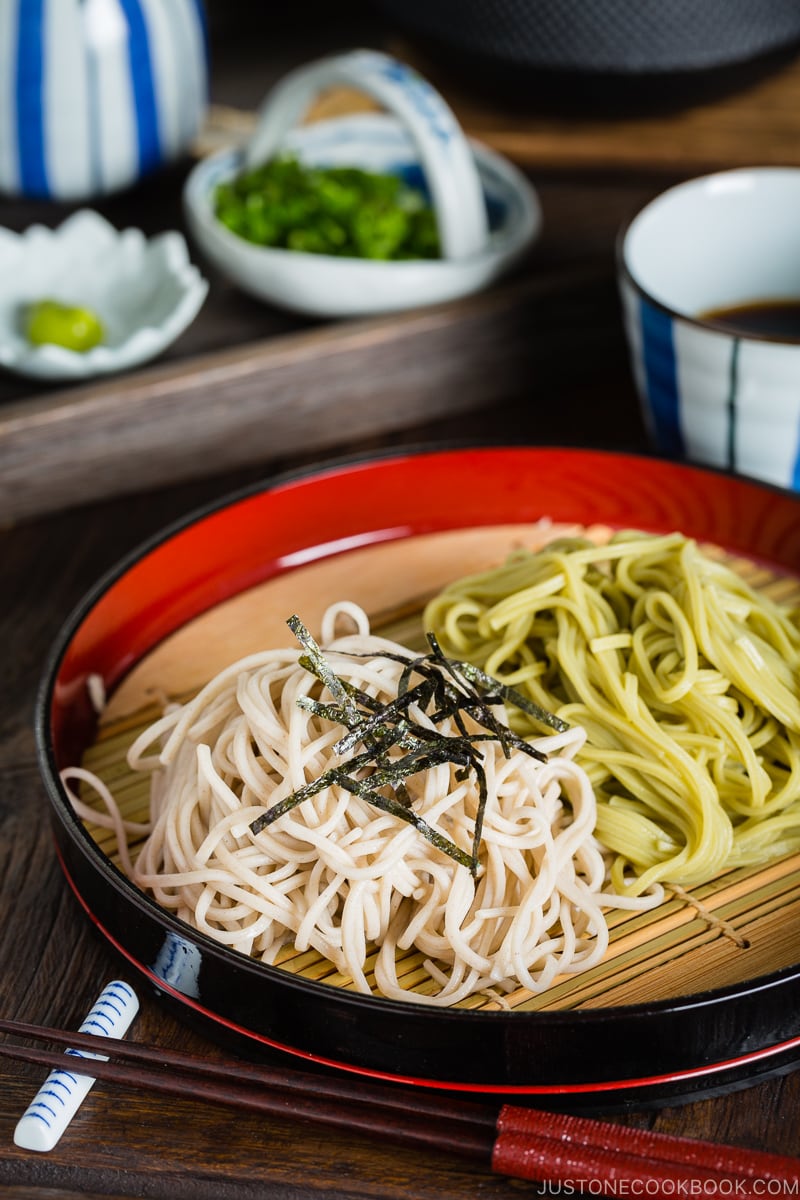
Is there any specific hot-weather food that you enjoy in your culture? In Japan, during the unbearable hot and humid summer, the classic cold Japanese noodle, Zaru Soba (ざるそば) is the perfect dish to cool down!
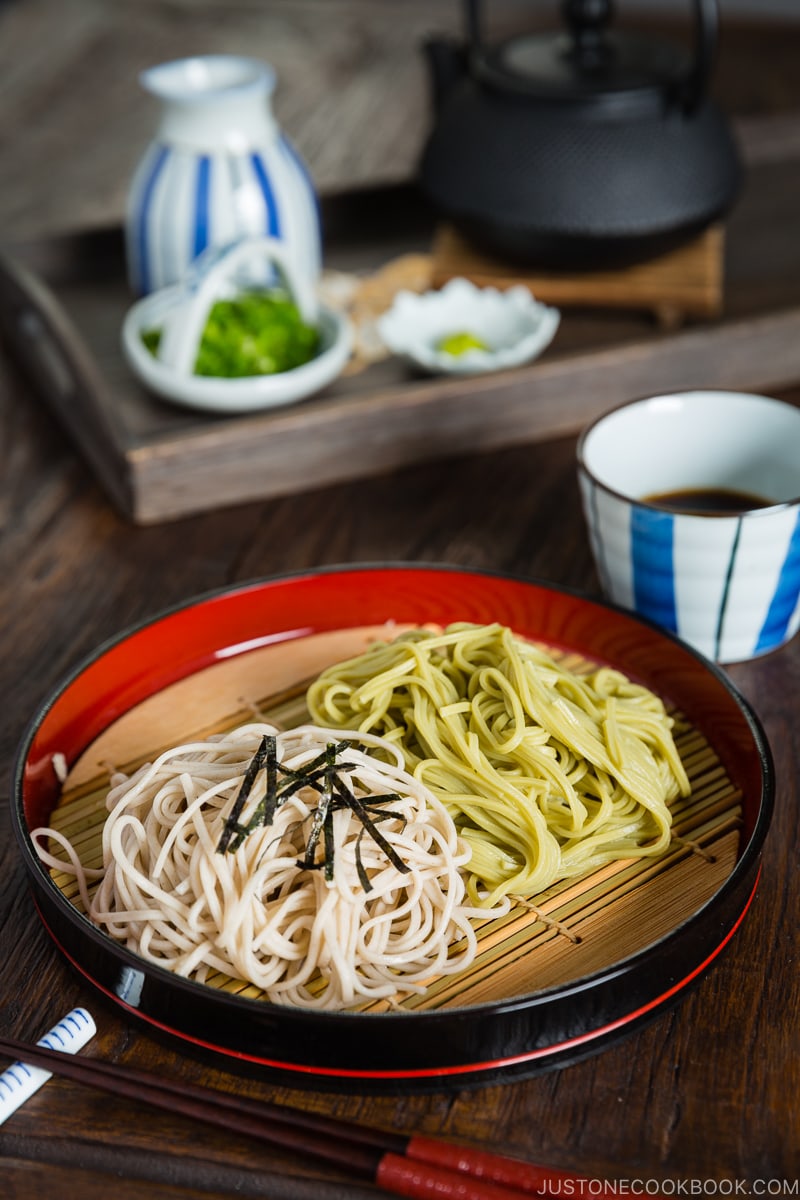
What is Zaru Soba?
Zaru Soba (ざる蕎麦) is a traditional chilled noodle dish made from buckwheat flour and served with soy sauce-based dipping sauce called Tsuyu (つゆ).
The word zaru means “a strainer” in Japanese and the name of the dish was derived from the way the noodles are served over a bamboo strainer during the Edo Period.
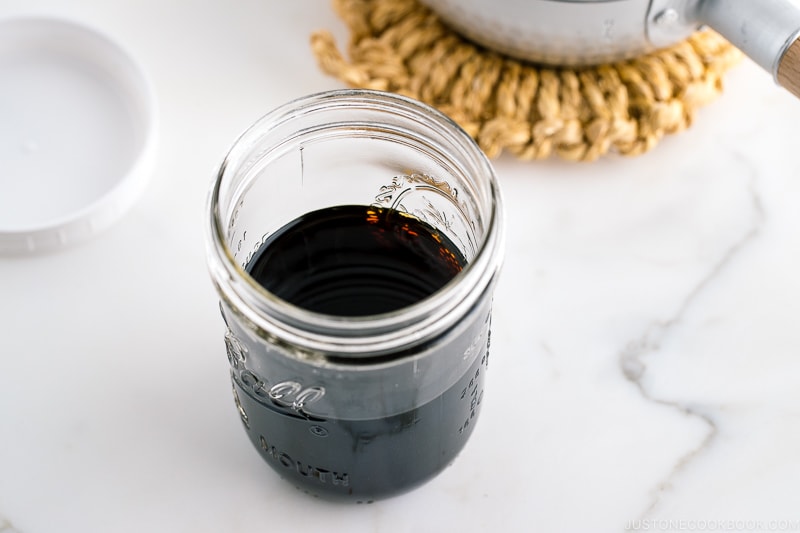
Make Homemade Tsuyu (Dipping Sauce)
Zaru soba is always served with a soy sauce and dashi-based sauce to enjoy. In today’s recipe, I share how to make the homemade dipping sauce, mentsuyu (noodle soup base), or often called tsuyu. You just need a few common pantry ingredients to make this, and I usually make it ahead of time to use noodle recipes.
Even though I make a homemade version, I keep a bottle of mentsuyu in my refrigerator so I can quickly use it when I don’t have the homemade version. You can buy a bottle in a Japanese or Asian grocery store.
Metnsuyu is often concentrated (and my homemade version, too). All you need to do is to combine 1 part of cooled dipping sauce and 2-3 parts of iced water in a serving pitcher.
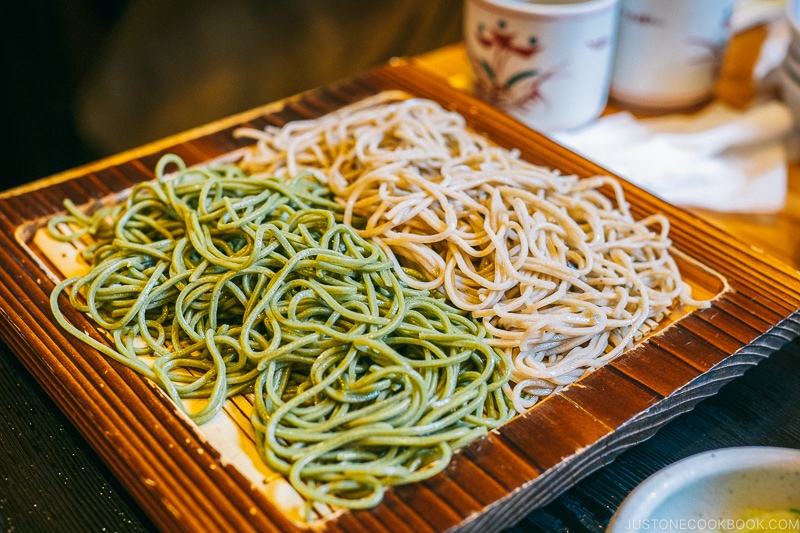
Types of Soba (Buckwheat Noodles)
There are different varieties of soba noodles in Japan, but the primary differences are texture and flavors.
The Ratio of Buckwheat Flour
- Ju-wari Soba (十割そば) is made of 100% buckwheat flour. It has a dry and rough texture so the noodles are easily broken. Ju-wari soba has a strong buckwheat aroma and flavor, and it can be hard to make because of the dry and crumbly texture.
- Hachi-wari Soba (八割そば) is made from 80% buckwheat flour and 20% wheat flour. Hachi-wari means 80% in Japanese. The noodle is much smoother and it has an al dente texture. Unlike Ju-wari Soba, it’s easy to swallow and chew. However, the buckwheat aroma is less pronounced than Ju-wari.
It’s hard to say which soba is tastier and more delicious; it really depends on personal preference!
Different Flavors for Buckwheat Noodles
You might have seen packages of green or pink soba noodles in Japanese grocery stores.
- Green Tea Soba (Cha Soba, 茶そば) – The noodles are flavored with a small amount of green tea powder to give a subtle green tea taste and green tint.
- Ume Plum Soba (Ume Soba, 梅そば) – The noodles are flavored with Japanese ume plum and have a slight pink color.
👉🏻 Interested to learn more about soba noodles? Read my pantry post which includes the origin, nutrition, and recommended brands for soba noodles.
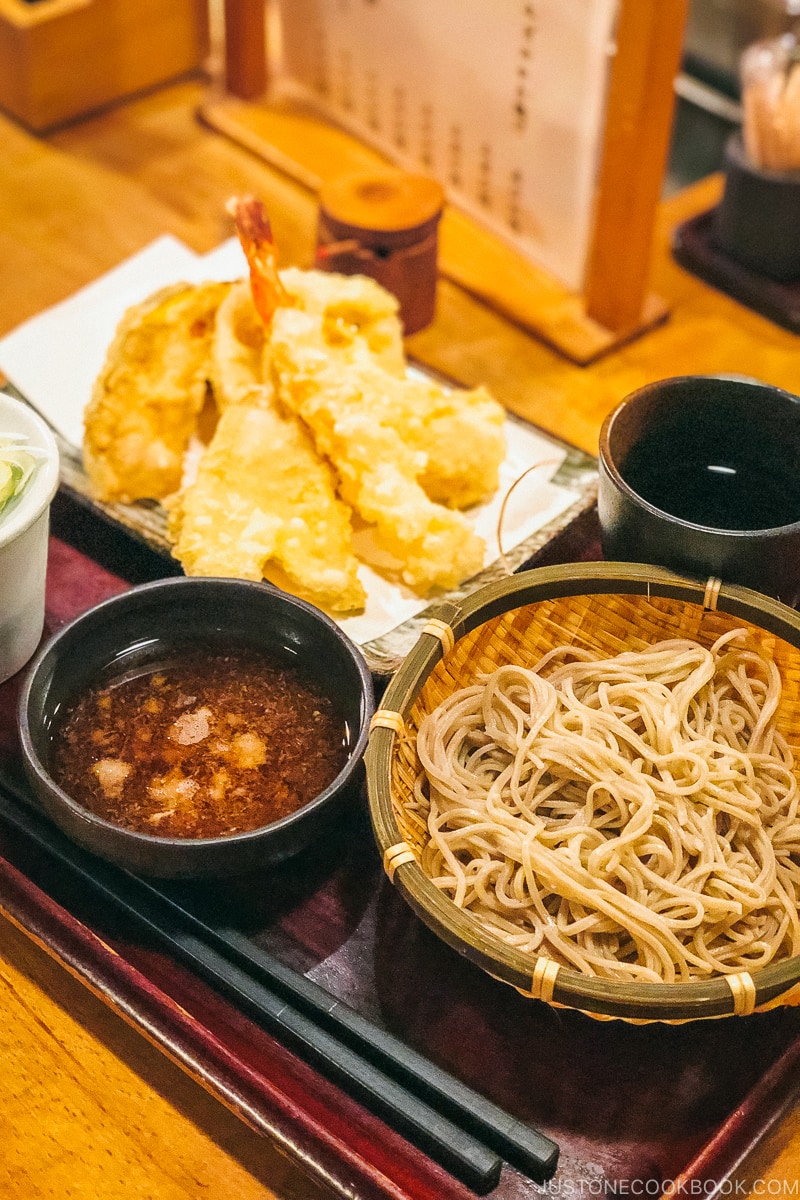
5 Important Tips When Cooking Soba Noodles
- Prepare a large pot filled with plenty of water. Even you’re cooking for one person!
- Separate the dried noodles when adding to the boiling water.
- Stir the water with chopsticks so the soba noodles are not stuck together.
- Rinse the noodles under cold running water to remove the starch.
- Chill the noodles in ice water for 30 seconds. The noodles will firm up for a more chewy texture.
How to Eat Soba Noodles Correctly in Japan
Zaru soba is unquestionably a simple dish, but we do have a protocol on how to eat the noodles.
At the table, place the pitcher of dipping sauce (tsuyu) and small dishes that contains chopped green onions and grated wasabi. Each person has a plate (or zaru) of soba noodles and a small bowl or cup for dipping sauce.
Serve yourself the dipping sauce in the small bowl/cup and add some condiments of your choice such as green onion, wasabi, grated daikon, sesame seeds, or grated ginger. Then pick up some soba noodles, dip them in the dipping sauce briefly, and slurp the noodles. The dipping sauce is salty, so don’t soak the noodles in the sauce for a long time.
When you’re done with the noodles, you can pour the reserved sobayu (そば湯)— soba cooking water —into the rest of your dipping sauce in the bowl/cup and enjoy it as a soup broth.
Soba in the context of a meal can also be enjoyed with a variety of accompanying vegetables such as mushrooms, carrots, daikon radish, and lettuce/cabbage-based salads.
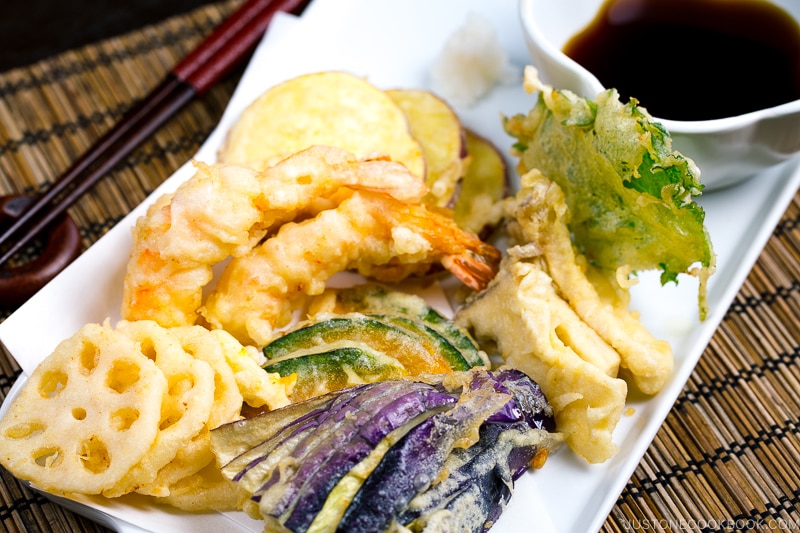
Serve Zaru Soba with Tempura
At soba or udon noodle shops, it’s very common to serve the noodles with tempura. When we serve zaru soba with tempura, we call the dish tenzaru (天ざる).
My mom usually serves zaru soba with Vegetable Tempura and Shrimp Tempura. This Japanese cold soba noodle is a perfect summer dish, but it’s a bit challenging to deep-fry tempura when it’s scorching hot outside… But I can definitely say tenzaru is worth the effort!
More Soba Noodle Recipes You’ll Love
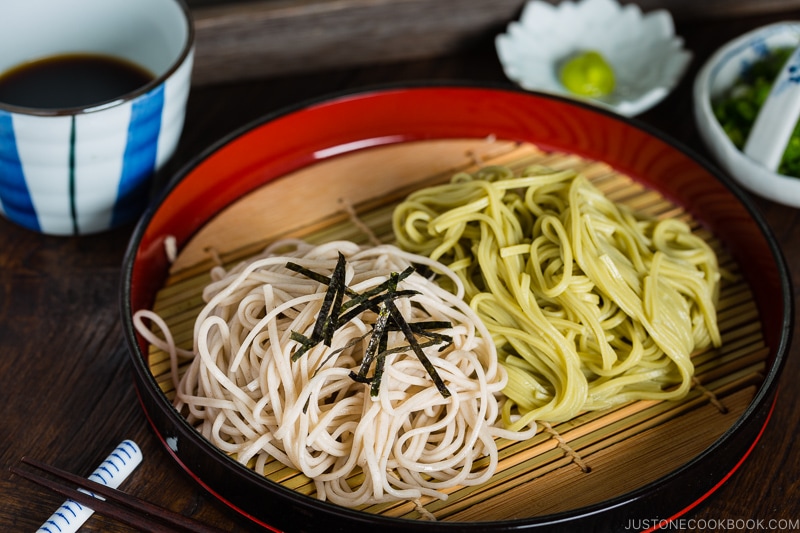
Wish to learn more about Japanese cooking? Sign up for our free newsletter to receive cooking tips & recipe updates! And stay in touch with me on Facebook, Pinterest, YouTube, and Instagram.
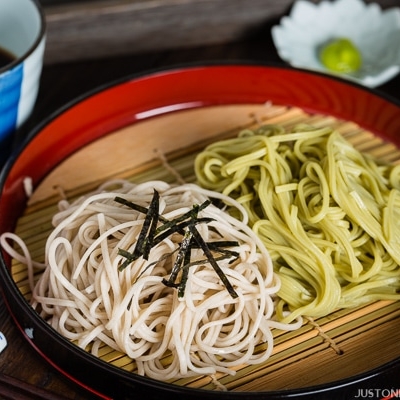
Zaru Soba (Cold Soba Noodles)
Light and refreshing, Zaru Soba (Cold Soba Noodles) will be your summer go-to staple. Ten minutes is all you need to whip up this delicious chilled noodle dish.
Ingredients
For the Mentsuyu (Concentrated Noodle Soup Base)
Instructions
To Make the Mentsuyu (Concentrated Noodle Soup Base)
Nutrition
Calories: 348 kcal · Carbohydrates: 75 g · Protein: 15 g · Fat: 1 g · Saturated Fat: 1 g · Polyunsaturated Fat: 1 g · Monounsaturated Fat: 1 g · Sodium: 629 mg · Potassium: 267 mg · Fiber: 1 g · Sugar: 2 g · Vitamin A: 60 IU · Vitamin C: 1 mg · Calcium: 39 mg · Iron: 3 mg
Editor’s Note: The post was originally published in August 2011. It’s been updated with new images and the video in July 2016. The post has been updated and republished in July 2020.
[ad_2]
Source link





More Stories
How to Teach Reading Comprehension
Restaurants and Food Allergies – A Problem?
The 11 Forgotten Laws Review – The Truth On Bob Proctor’s Course